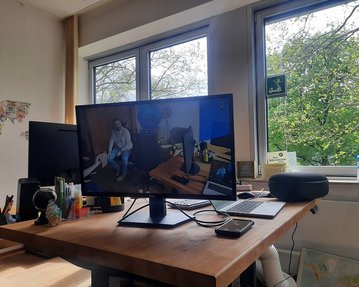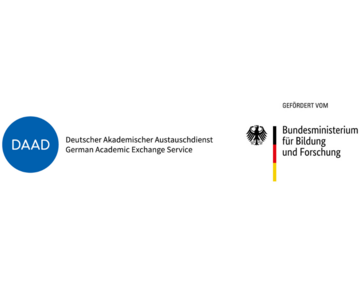
Since March 2023, our university has been working closely with universities in Serbia and Italy on two projects within the DAAD’s “International Virtual Academic Collaboration” (IVAC) programme. Their focus: water technologies and architecture.
Since March 2023, our university has been working closely with universities in Serbia and Italy on two projects within the DAAD’s “International Virtual Academic Collaboration” (IVAC) programme. Their focus: water technologies and architecture.
Making education more international and accessible, and preparing students for the demands of the globalised world of work – these twin aims unite two projects that SRH University Heidelberg is implementing as part of the German Academic Exchange Service (DAAD)’s IVAC programme, funded by the German Federal Ministry of Education and Research (BMBF). The projects contribute to creating equal opportunities in the context of “Internationalization@home”, and are intended to promote international exchange on methodological approaches and technical solutions in engineering and architectural sciences. They also aim to help broaden students’ practical knowledge beyond the laboratory opportunities offered by their own universities.
The projects started in March 2023 and will run until the end of the year: in the “Virtual Lab Experience Wastewater Treatment” (V-Lab Water) project, SRH University Heidelberg and the University of Novi Sad in Serbia are working together on a course entitled “Environmental Practicum – Water Pollution and Analysis”, which will begin in winter semester 2023. Currently, the two project leaders, Professor Dr Maja Turk-Sekulić, who heads the Water Treatment and Safety Engineering course at the University of Novi Sad, and Professor Dr Ulrike Gayh, head of the Water Technology course at SRH University Heidelberg, are in the middle of preparing the ten-week event. They are even planning excursions, each of which will be broadcast live to the other university. With the help of HoloLense and Livestream, the students can work together across borders and long distances, and be there live as the other group of students carries out water analyses, for example. As Professor Dr Ulrike Gayh explained, “This kind of international collaboration via VR technologies will bring us innovative results – in spite of spatial distance and time differences, effectively and in real time. And it’s a great intercultural experience, where students can use a wide range of soft skills.”
In the “Collaborative International Venues on Impacts on Cittàslow” (CIVIC+) project, SRH University Heidelberg, under project leader Professor Dr Marc Kirschbaum, is working closely with Professor Dr Eliana Martinelli and Professor Dr Giovanna Ramaccini from the Università degli Studi di Perugia in Italy. The German town of Homburg (Efze) is a strategic project partner. Master’s students of architecture at both universities are dealing with issues involving architecture, sustainable urban development, and the environment.
“What will the future of rural areas look like? How can the architectural heritage of European cities be preserved and at the same time developed for the future? We are also linking the example of the town of Homberg (Efze), with its half-timbered houses, to some of the overarching academic issues related to current challenges for social and urban development in both Germany and Italy,” Professor Kirschbaum explained. A week-long workshop of both partner universities is also currently taking place in Homberg (Efze). Field research and results of the project will be presented to the public and will help demonstrate the town’s current development on the ground. Students have participated in numerous mixed-method online project meetings to prepare for this field study and develop their intercultural network.
In both IVAC projects, students have been able to make international comparisons and have taken advantage of cross-border collaboration to prepare themselves for the global labour market and the worldwide challenges posed by climate change and societal development. Virtual teaching collaboration on an international stage has been an important step towards strengthening cooperation between universities to take on global challenges and promote innovation and exchange in the sciences.


Discover your degree programme up close! Book your taster session now!